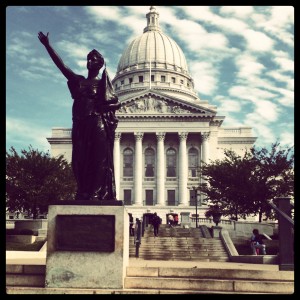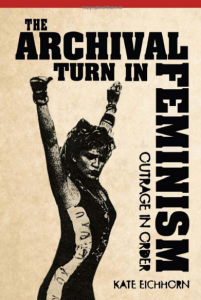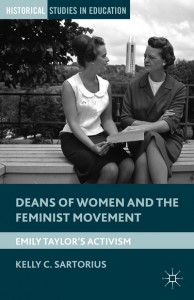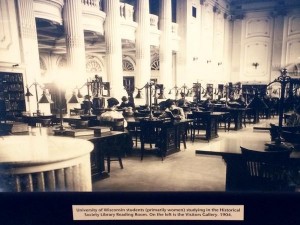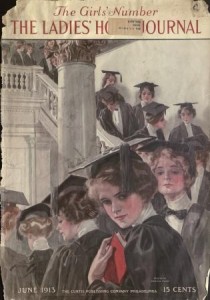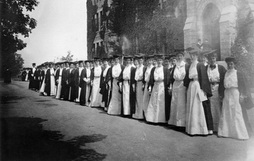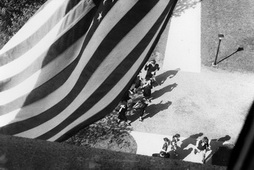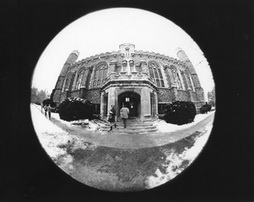
Books on display in Taking Her Place as part of the section on Gender and Intellect.
When we were collecting material for the exhibition Taking Her Place, it was a challenge to find items that would tell the story of women’s ascent into higher education without relying too heavily on only text. Periodicals such as The Ladies’ Companion and The Ladies Garland are some of the best resources that we have for gauging society’s attitude towards female intellectualism, as the articles they featured show the developing shape of public opinion. However, they do not make ideal exhibit items: arranged behind glass, the books are difficult or impossible to read at length, and an exhibition dominated by unreadable books makes for a bland visual display. Therefore, we found ourselves with many fascinating textual objects that illustrated the story we wanted to tell but did not have a place in the exhibition. Many of those items hold an important place in the narrative of women’s rise into the public sphere, and as we move into the final week of the exhibition, we will highlight a few of them on this blog in order to more fully flesh out the themes that we address in that space. We will post more material in conjunction with the release of an online version of the exhibition, which will take the form of a digital exhibit like the others on our website.
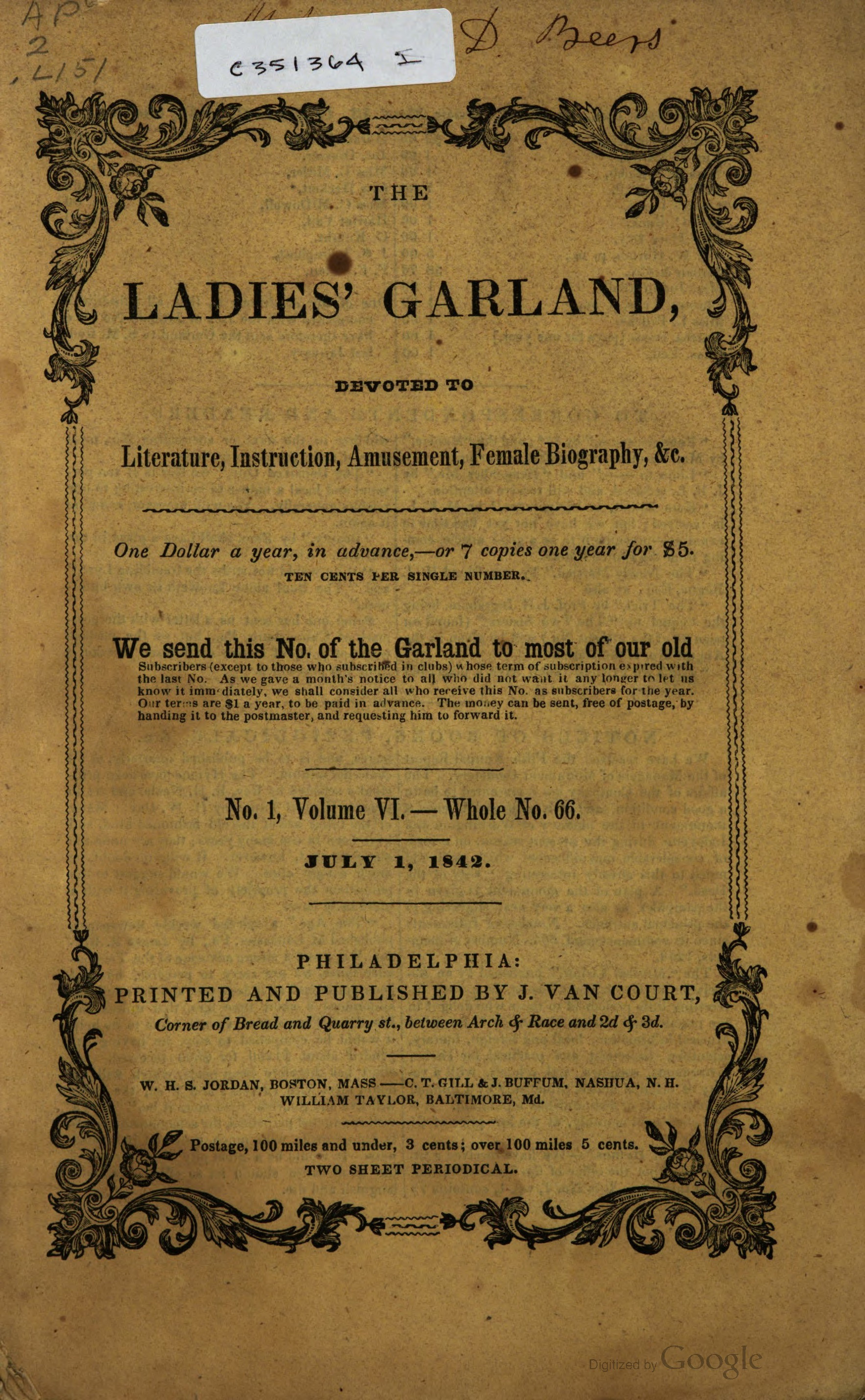
Title page of the July 1, 1842 issue of The Ladies’ Garland. Click for an enlarged view.
One item that we would have like to include is this article from an 1839 issue of The Ladies’ Garland, entitled “Proper Studies for Ladies,” which touches on many of the themes common to the opinion pieces of the era. As higher education for women appeared on the horizon, society grappled with what forms of knowledge would be appropriate for a woman to pursue. In this article, the anonymous male author juxtaposes the intellectual and commercial realms of society and seems to feel dubiously about women’s place in either.
The prevailing message of the piece is that modern women are wont to forgo the enriching study of history and natural philosophy in favor of “fashionable trifles,” “idle romances and puerile tales.” Instead, he writes, ladies “of the first rank” ought to “form their taste upon the best authors, and collect ideas from their useful writings.”
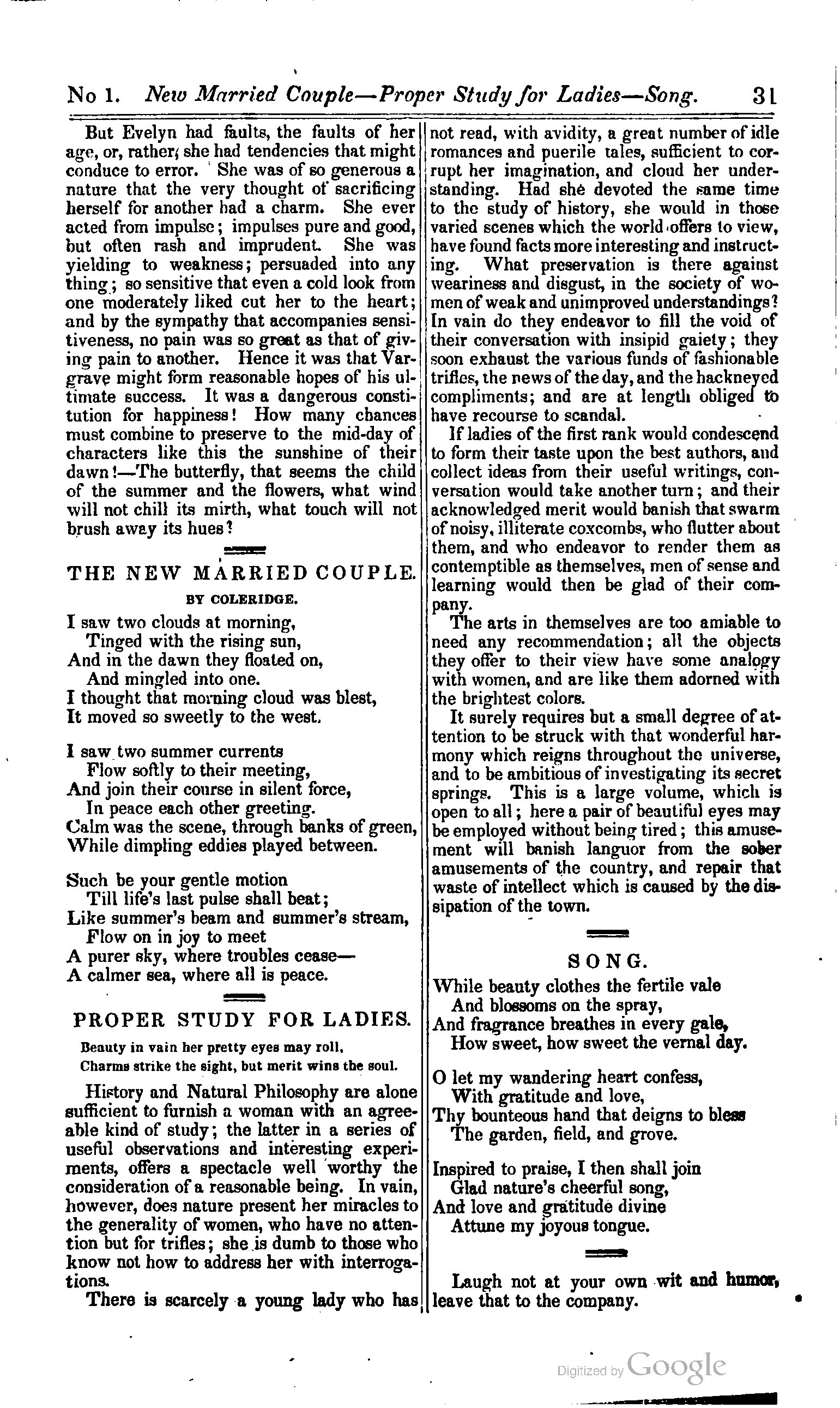
Page 31 of The Ladies Garland, Volume II, 1839, including “Proper Study for Young Ladies.” Click for enlarged view.
While I was combing through contemporary journals and magazines to get a sense public opinion across the era, this piece stood out to me as unusual. It struck me as fairly advanced for 1839 that a male author would take for granted that intellectual study was both available to and appropriate for women. However, though it seems progressive in its advocacy for ladies’ serious study, there is a strong conservatism at its core that I will devote this post to exploring. This paradox is characteristic of many of the articles that Jennifer and I read while researching for the exhibition: I’ve learned that progressivism and conservatism often move together in strange ways as society adjusts to major changes, and are rarely as separable or black-and-white as I would have initially expected to find them.
It fascinates me that the author is certain at such an early date that any woman who wished to could gain access to intellectually stimulating study. “This is a large volume,” he writes of such pursuits, “that is open to all.” However, “In vain…does nature present her miracles to the generality of women,” as if the study of natural science was so available that women would have to work hard not to be exposed to it. It is unclear exactly how he expected them to engage with such material, considering the state of formal schooling at the time: Oberlin College, the first co-educational college in the United States, had been founded only six years earlier, in 1833. The only other form of secular post-secondary education for women at the time was the seminaries that offered training for a teaching career, of which there were eight in existence nationwide in 1839. Since formal higher education was hardly widespread, the author therefore seems to imagine that women should be pursuing academic curiosity in a self-guided capacity.
Writers of a previous age, and many who wrote well into the 1800s, considered the education of a woman to be tantamount to her corruption. This author clearly disagrees, but if a woman of virtue could be an intellectual, what sort was she to be and to what end was she to use her sophistication? A hint can be found at the very beginning of the piece, in the epigraph:
“Beauty in vain her pretty eyes may roll,
Charms strike the sight, but merit wins the soul.” [1]
This quotation frames the article by asserting the value of substance over appearance, which is consistent with the article’s rejection of ornament—but, notably, it also situates the matter within the context of women’s appeal to others: it lays groundwork for an article that will posit female intellectualism as a tool for attraction; in short, another form of ornament.
The author’s thesis is that because they fail to take advantage of the intellectual richness available to them, most women thus reduce their prospects for good matches by offering only conversation which is vapid and unappealing to respectable men—who are, of course, the true victims of this unfortunate situation. “What preservation is there against weariness and disgust,” he ruminates, “in the society of women of weak and unimproved understandings? In vain do they endeavor to fill the void of their conversation with insipid gaiety; they soon exhaust the various funds of fashionable trifles, the news of the day, and the hackneyed compliments; and are at length obliged to have recourse to scandal.” The true goal, therefore, of women’s learning, is to make them into better companions.
The article suggests that the idea of what would corrupt women was changing. The previous belief was that knowledge itself would corrupt, whereas here it is the wrong kind of knowledge that is to be feared—In other words, a misuse of intellectual powers. Indeed, language of misuse, in the form of waste and misdirected spending, permeates the piece. Three examples come to mind: the phrase “in vain” appears three times including the epigraph, each instance describing a woman (if we count the personified Nature) fruitlessly expending effort in order to appeal to another. The unlearned lady whose foolish prattle fails to impress “soon exhaust[s] the various funds of fashionable trifles.” (Italics mine.) And, at the end of the article, the author bemoans the “waste of intellect which is caused by the dissipation of the town.” Instead of such wasteful behavior, he suggests that women “collect” (ideas from the best authors) rather than spend. This language underlies his portrayal of women consumed with the trivial trappings of femininity, especially those that could be linked to commercialism and had an air of cheapness: they were attracted to the “fashionable trifles” that were being marketed to them (in magazines just like this one), and even their trivial conversation (“the news of the day,” “scandal,”) is ephemeral and probably harvested from the gossip columns.
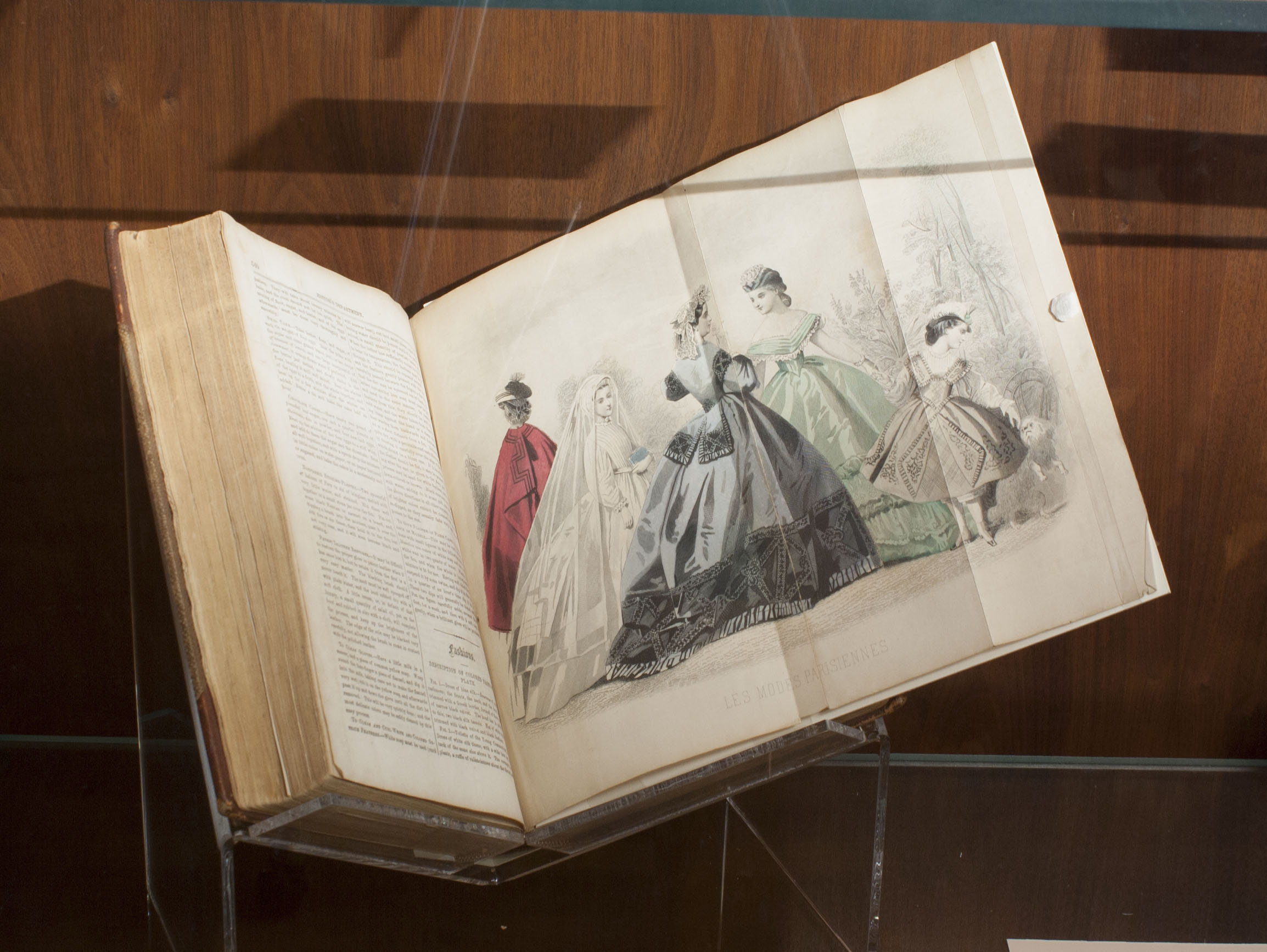
The Ladies’ Friend, another popular periodical at the time, interspersed fiction and opinion pieces with large pull-outs like this one depicting the fashions of the season.
Considering all of the negative associations that he establishes between women and commercial economy, perhaps the feminine ideal that the author paints (studious, yet passive, and economically disengaged) is a paranoid reaction to women’s growing economic power as a class of consumers. He manages to exclude women from both the commercial and intellectual realms: he blames them for partaking in the former, and suggests that they would be welcome in the latter if only they had the virtue to earn themselves a place there. And do they? He writes that “scarcely a young lady” exists who has not fallen into the pitfalls of cheap and entertaining literature. Though he idealizes the woman who devotes her time to academic study, he speaks of such women as if they are in practice an impossibility, a mythical being. Women’s real practices are demonized, and the hypothetical woman who “gets it right,” so to speak, doesn’t exist: perhaps he is so threatened by female agency that he is compelled to write them out of all public realms. So, if they can exist productively nowhere in the public sphere, what use are women to society? The one role that the author feels comfortable ascribing to women is that of passive indicator of the state of society. He ends with the proclamation that the “amusement [of proper study] will…repair that waste of intellect which is caused by the dissipation of the town,” as if women’s unintellectualism is a symptom of a societal disease. He implies that the health of society can be read through the quality and state of its women, positing them as a kind of diagnostic tool rather than as a class of people.
This article, one of many that we would have liked to include more prominently in Taking Her Place, demonstrates several themes that are common to the opinion articles of the age. It shows a surprisingly advanced advocacy for women’s learning, while still clinging rigidly to the traditional role of the subordinate an ornamental woman. It also conspicuously lacks an argument for education for its own sake: it was much more common to posit education as a means to serve some aspect of traditional femininity, such as aptitude for motherhood or (as seen here) male companionship. The juxtaposition of commercial and intellectual pursuits was also a major topic of writings of the time, especially with an air of blame towards any woman who demonstrated too much affinity for the former. Combing through these books and journals was a fascinating activity and gave us a broad sense of the complexity of changing opinion across an era. Anybody who is interested in learning more, or in reading other articles from our wide collection, is encouraged to come visit in Bryn Mawr Special Collections in Canaday Library and browse the collection for themselves.
[1]Though uncredited and misquoted, the lines are from Alexander Pope’s “The Rape of the Lock,” first published in 1712. The first line in the original text reads “Beauties in vain their pretty eyes may roll.”

